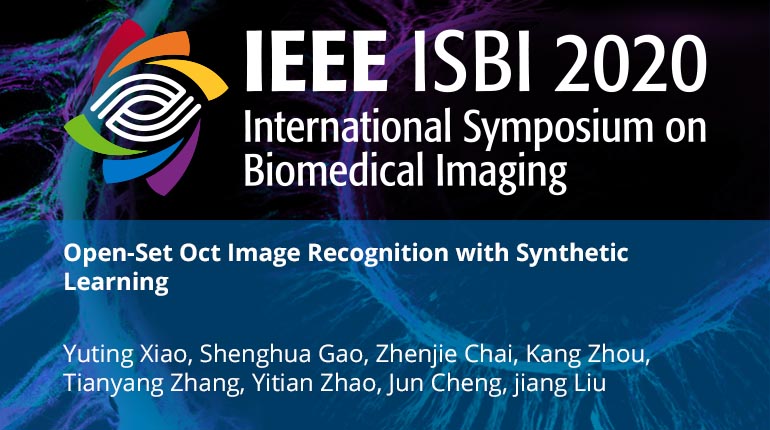
Already purchased this program?
Login to View
This video program is a part of the Premium package:
Open-Set Oct Image Recognition with Synthetic Learning
- IEEE MemberUS $11.00
- Society MemberUS $0.00
- IEEE Student MemberUS $11.00
- Non-IEEE MemberUS $15.00
Open-Set Oct Image Recognition with Synthetic Learning
Due to new eye diseases discovered every year, doctors may encounter some rare or unknown diseases. Similarly, in medical image recognition field, many practical medical classification tasks may encounter the case where some testing samples belong to some rare or unknown classes that have never been observed or included in the training set, which is termed as an open-set problem. As rare diseases samples are difficult to be obtained and included in the training set, it is reasonable to design an algorithm that recognizes both known and unknown diseases. Towards this end, this paper leverages a novel generative adversarial network (GAN) based synthetic learning for open-set retinal optical coherence tomography (OCT) image recognition. Specifically, we first train an auto-encoder GAN and a classifier to reconstruct and classify the observed images, respectively. Then a subspace-constrained synthesis loss is introduced to generate images that locate near the boundaries of the subspace of images corresponding to each observed disease, meanwhile, these images cannot be classified by the pre-trained classifier. In other words, these synthesized images are categorized into an unknown class. In this way, we can generate images belonging to the unknown class, and add them into the original dataset to retrain the classifier for the unknown disease discovery
Due to new eye diseases discovered every year, doctors may encounter some rare or unknown diseases. Similarly, in medical image recognition field, many practical medical classification tasks may encounter the case where some testing samples belong to some rare or unknown classes that have never been observed or included in the training set, which is termed as an open-set problem. As rare diseases samples are difficult to be obtained and included in the training set, it is reasonable to design an algorithm that recognizes both known and unknown diseases. Towards this end, this paper leverages a novel generative adversarial network (GAN) based synthetic learning for open-set retinal optical coherence tomography (OCT) image recognition. Specifically, we first train an auto-encoder GAN and a classifier to reconstruct and classify the observed images, respectively. Then a subspace-constrained synthesis loss is introduced to generate images that locate near the boundaries of the subspace of images corresponding to each observed disease, meanwhile, these images cannot be classified by the pre-trained classifier. In other words, these synthesized images are categorized into an unknown class. In this way, we can generate images belonging to the unknown class, and add them into the original dataset to retrain the classifier for the unknown disease discovery
 Cart
Cart Create Account
Create Account Sign In
Sign In





